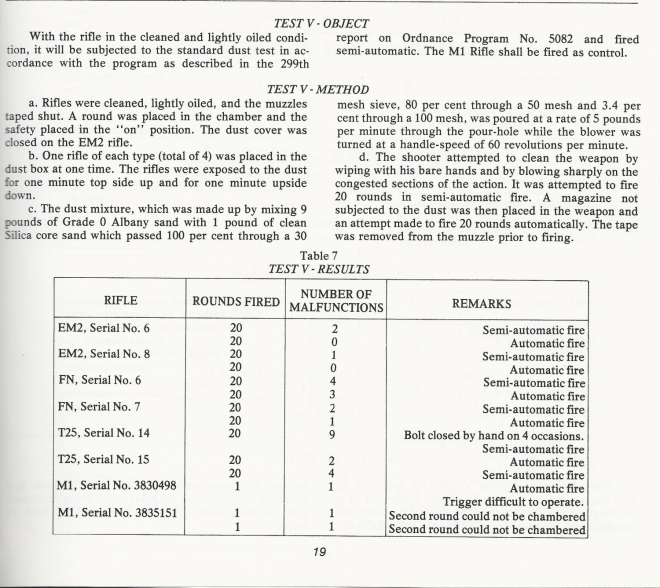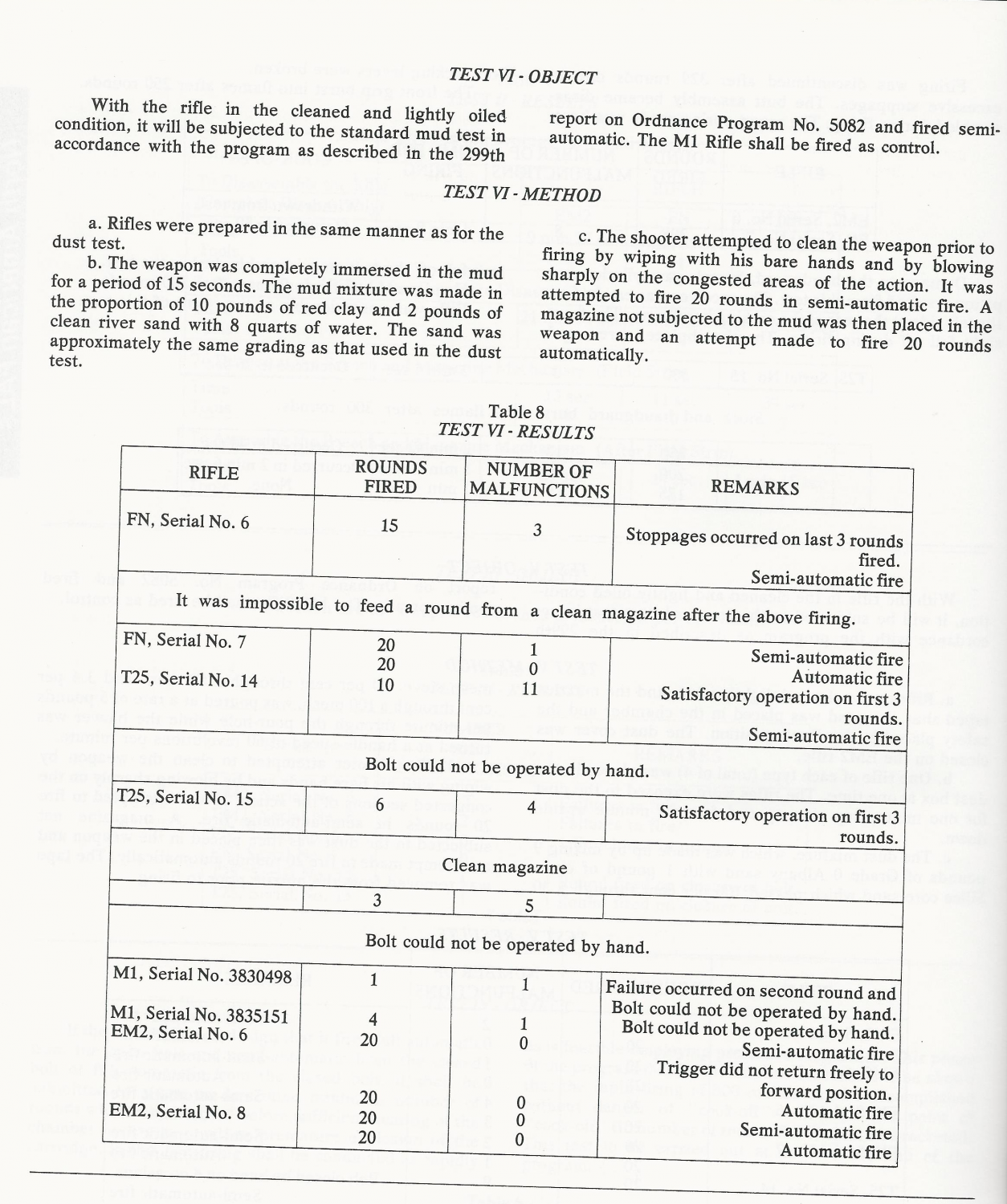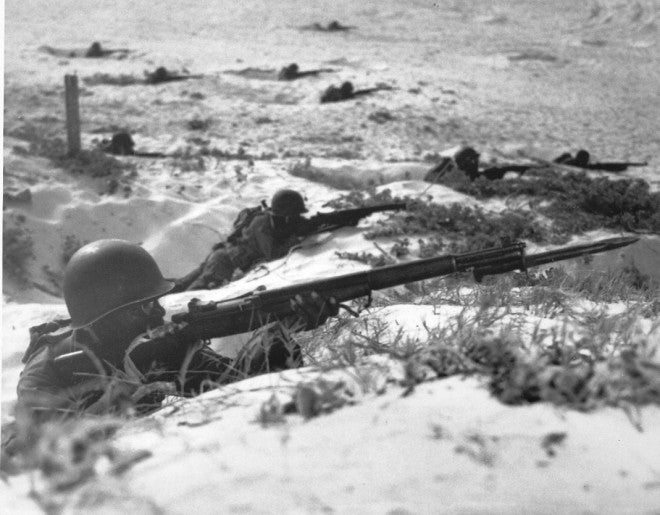In preparation for an upcoming article about “light rifle” development (i.e., full power automatic infantry rifles), I have been reading the excellent Collector Grade Publication three-part volume on the FN FAL rifle. In it is contained the transcript of the 1950 Light Rifle trials, which pitted the American T25 design (a rifle that was at once a hybrid of the M1 Garand and BAR, but at the same time much more than that) by Earle Harvey, the Anglo-Polish EM-2 design by Stefan Janson, and the Anglo-Belgian FN FAL design – by none other than Dieudonné Saive, John M. Browning’s Belgian protégé – against the Second World War veteran the M1 Garand. The tests were comprehensive, but not all included the “control” rifle – the M1. Why this was so is not clear to me. In the rain tests, the M1 beat the EM-2 and was not so far behind the FAL and T25, and in the cold tests the M1 was a clear winner, functioning flawlessly (this would be echoed later when the T44E2 would beat the FAL in trials in Alaska, preventing its cancellation and eventually leading to the adoption of its descendant, the T44E4 as the M14, in 1957).
However, the tests that concern us today are the dust and mud tests. Our readers will surely recall the absolutely brutal dust and mud tests to which InRange TV subjected a Springfield Armory (the modern-day company, not the government arsenal) M1A at the end of January and beginning of this month, with disastrous results for that rifle. Before that, Guns & Ammo performed a similar, though in my opinion less brutal mud test with another Springfield M1A, with an eerily similar outcome to InRange’s trials. With this in mind, and with the knowledge that the M1 Garand may have some key advantages over the M1A, due to its anti-pre-engagement mechanism and generous underlug (two features deleted from the T44 as design compromises), let’s take a look at the results of the 1950 dust and sand trials, on pages 19 and 20 of The FAL Rifle, reproduced below:


The first thing that becomes apparent is, with the exception of the typically stringent standards to which everything – from the mixtures of both sand and mud, to the length of exposure the rifles had to endure – was held, how similar these two tests are to those done by InRange last month. Given that these tests preceded the InRange trials by 65 years, and given Ian’s propensity for Collector Grade volumes, it’s not entirely out of the question that these trials provided the model for his tests of the M1A, AR-15, and MAS 49/56.
The next thing that leaps from the page is the results obtained with the M1 Garand control rifles. First, note that both rifles are late serial numbers, manufactured in the fall of 1945 during the last production run of M1 rifles before this test was conducted (about another million and a half would be produced during the Korean War), and probably had not seen much use. Though fresh, the rifles duplicate the InRange results almost exactly: When exposed to debris, the open action of the weapons shuts down quickly and totally.
With the combined results of the 1950 trials, the Guns & Ammo mud test, and the InRange tests, it’s difficult to come to any other conclusion than that this design utilizing an open receiver is fundamentally crippled in its ability to deal with exposure to sand, dust, mud, and other debris. Three separate trials, held years and decades apart from each other, produce almost identical results: The quick retirement of the rifle from the field.
Is there enough evidence to say this for sure? Hesitantly, yes, I think so. My own experience with rifles based on this design (in particular the M1 Carbine, which lacks many of the redeeming qualities of either the M1 or M14) adds anecdote to the evidence of these three trials. Even so, I welcome more testing, which may either confirm this conclusion, or cast doubt upon it.
This article is not a condemnation of the M1 Garand as a whole, but a highlight of one particular and serious flaw; one that, it’s worth noting, very few designs since have replicated. Even the Kalashnikov automatic rifle, which is heavily based on the M1 Garand, has significantly revised architecture designed to preserve some of the best qualities of the M1 Garand (such as its cold resistance – which is perhaps not a coincidence considering John Garand was a native Canadian) while vastly improving its resistance to dust and debris.
 Your Privacy Choices
Your Privacy Choices
